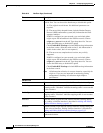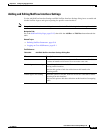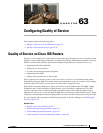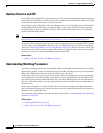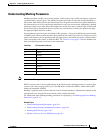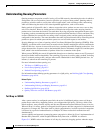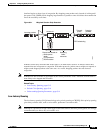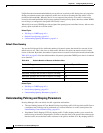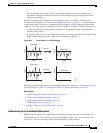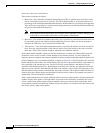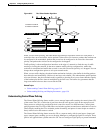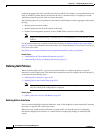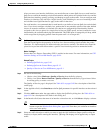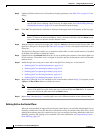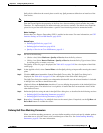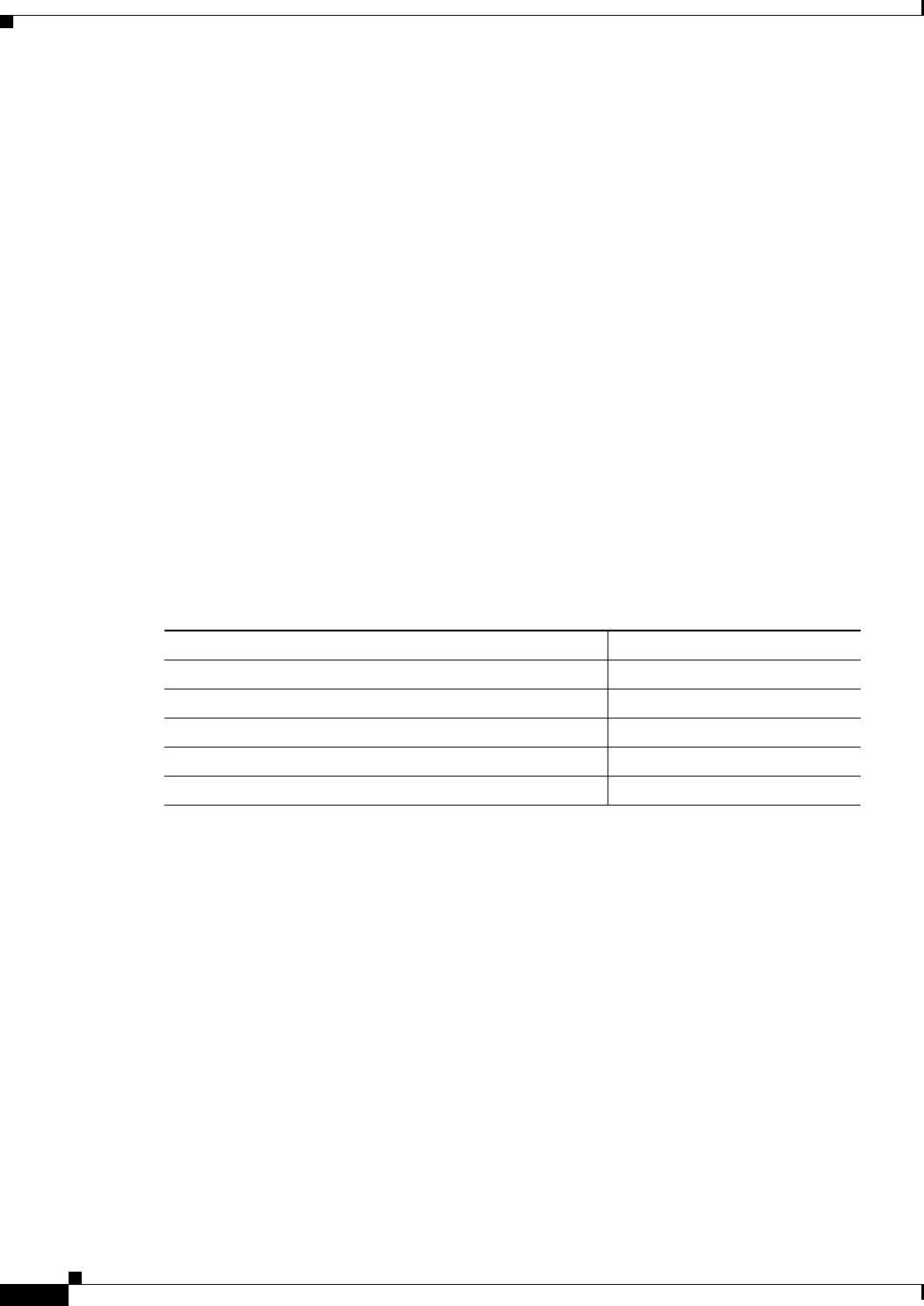
63-6
User Guide for Cisco Security Manager 4.4
OL-28826-01
Chapter 63 Configuring Quality of Service
Quality of Service on Cisco IOS Routers
LLQ defines the maximum bandwidth that you can allocate to priority traffic during times of congestion.
Setting a maximum ensures that nonpriority traffic does not starve (meaning that this traffic is also
provided with bandwidth). When the device is not congested, the priority class traffic is allowed to
exceed its allocated bandwidth. Policing drops packets from the priority queue; therefore, neither WRED
nor tail drop (as configured in the Queue Limit field) is used.
When LLQ is not used, CBWFQ provides weighted fair queuing based on defined classes, with no strict
priority queue available for real-time traffic.
Related Topics
• Tail Drop vs. WRED, page 63-4
• Default Class Queuing, page 63-6
• Understanding Queuing Parameters, page 63-4
Default Class Queuing
You use the Fair Queue field to define the number of dynamic queues that should be reserved for the
default class to use. This is the class to which traffic that does not satisfy the match criteria of other
classes is directed. By default, the number of queues that are created is based on the interface bandwidth.
Table 63-2 on page 63-6 lists the default number of dynamic queues that CBWFQ uses when it is enabled
on an interface:
Related Topics
• Tail Drop vs. WRED, page 63-4
• Low-Latency Queuing, page 63-5
• Understanding Queuing Parameters, page 63-4
Understanding Policing and Shaping Parameters
Security Manager offers two kinds of traffic regulation mechanisms:
• The rate-limiting feature of Class-Based Policing for policing traffic. Policing limits traffic flow to
a configured rate. Policing can be performed on a selected interface or on the control plane. See
Understanding Control Plane Policing, page 63-9.
• Distributed Traffic Shaping (DTS) for shaping traffic. Traffic shaping enables you to control the
traffic leaving an interface (output traffic) in order to match its flow to the speed of the remote target
interface and to ensure that the traffic conforms to the policies defined for it. By shaping traffic to
Table 63-2 Default Number of Queues for Default Class
Bandwidth Range Number of Dynamic Queues
Less than or equal to 64 kbps 16
More than 64 kbps and less than or equal to 128 kbps 32
More than 128 kbps and less than or equal to 256 kbps 64
More than 256 kbps and less than or equal to 512 kbps 128
More than 512 kbps 256



